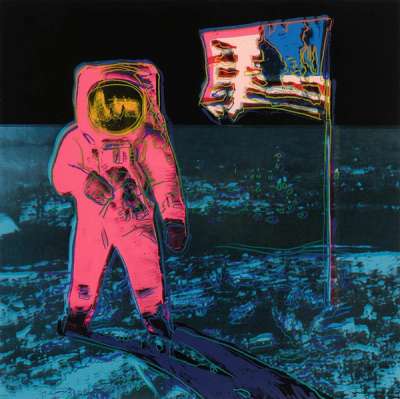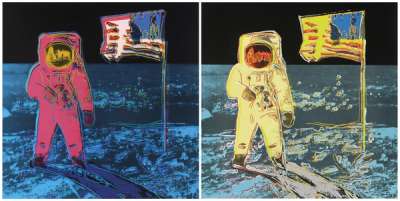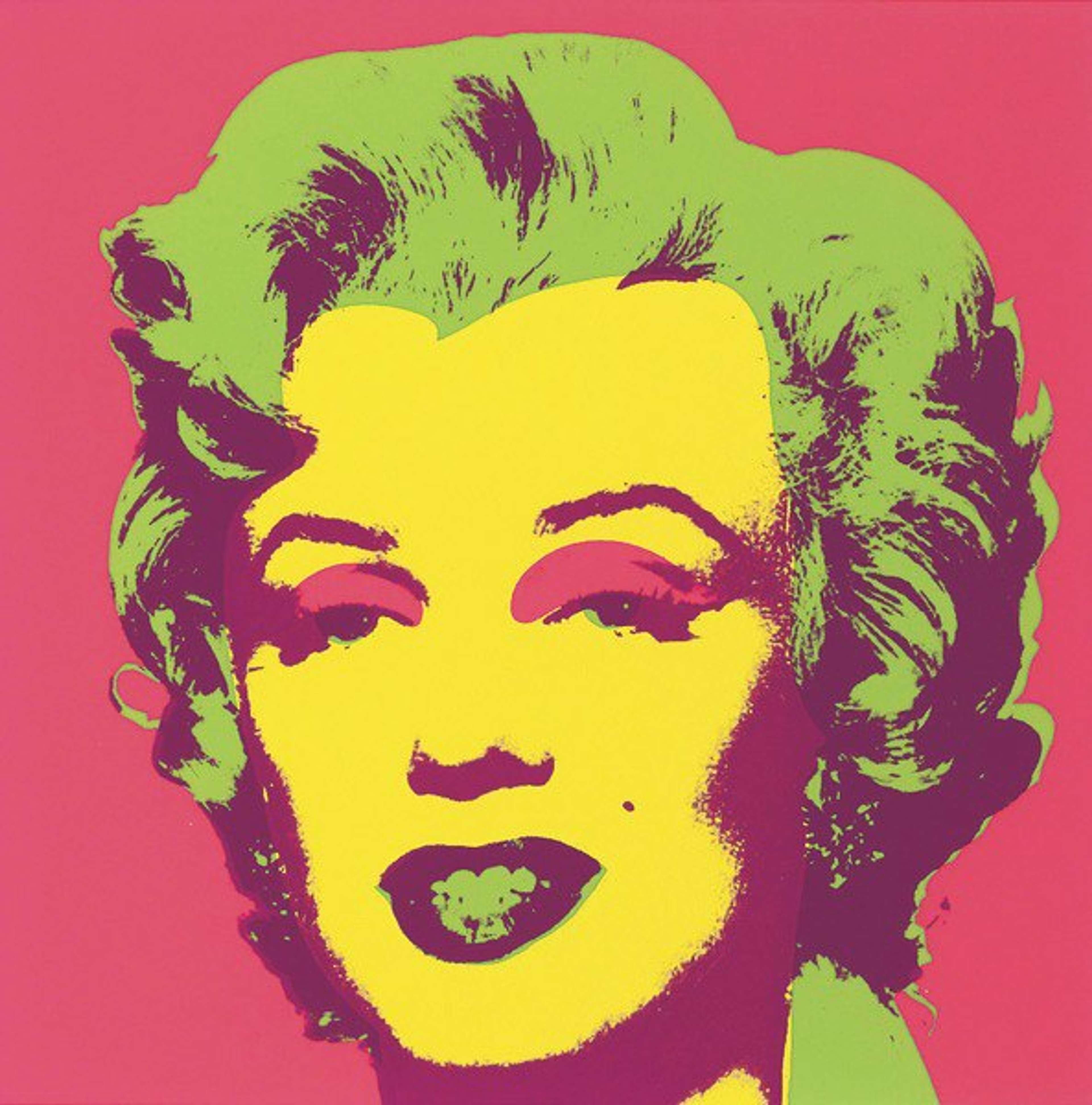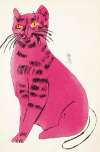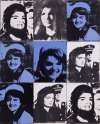Moonwalk
Andy Warhol’s Moonwalk (1987) is a suite of two prints, with yellow or pink highlights, appropriating Neil Armstrong’s photograph of Buzz Aldrin first walking on the moon, in 1969. Recreating the moment in screen print nearly twenty years on, Warhol reflects the lasting generational appeal of the original to Americans.
Andy Warhol Moonwalk For sale
Moonwalk Value (5 Years)
Works from the Moonwalk series by Andy Warhol have a strong market value presence, with 68 auction appearances. Top performing works have achieved standout auction results, with peak hammer prices of £462832. Over the past 12 months, average values across the series have ranged from £140000 to £462832. The series shows an average annual growth rate of 14.46%.
Moonwalk Market value
Auction Results
| Artwork | Auction Date | Auction House | Return to Seller | Hammer Price | Buyer Paid |
|---|---|---|---|---|---|
 Moonwalk Suite Andy Warhol Signed Print | 24 Oct 2024 | Phillips New York | £365,500 | £430,000 | £590,000 |
 Moonwalk (F. & S. II.404) Andy Warhol Signed Print | 25 Sept 2024 | Sotheby's London | £102,000 | £120,000 | £140,000 |
 Moonwalk (F. & S. II.405) Andy Warhol Signed Print | 16 Apr 2024 | Phillips New York | £229,500 | £270,000 | £370,000 |
Sell Your Art
with Us
with Us
Join Our Network of Collectors. Buy, Sell and Track Demand
Meaning & Analysis
Warhol’s Moonwalk prints from 1987, show the artist turning one of the 20th century’s most historic events into a Pop Art masterpiece TakingNeil Armstrong’s photograph of Buzz Aldrin walking on the moon, Warhol, for the very first time, turns this historic event into a Pop Art masterpiece. Though one might expect this work to have been done at the time of the moon landings in 1969, the prints were actually made in 1987, just a few months before Warhol’s death. It seems as though this subject appeared to Warhol to be important only after the fact, almost two decades later, when he had reached maturity in his career. And while it depicts a profound moment in the history of humanity Warhol adds his playful spin on it, tinting the iconic white astronaut suit with tones of pink in Moonwalk 405 and giving the surface of the moon a toxic green covering in Moonwalk Trial Proof.
The prints were intended to be part of a larger series titled TV which would include other key moments from America’s history such as a still of Martin Luther King Jr giving his famous ‘I have a Dream’ speech and the Beatles’ first appearance on the Ed Sullivan Show. However, Warhol’s untimely death from surgery complications meant that Moonwalk is the only print that was completed, making this an extremely sought after work in his oeuvre.
Moonwalk demonstrates Warhol's unfailing talent for spotting iconic images, and adds his own unique touch, drawing over the original image as well as overlaying it with bright blocks of colour that make it unmistakably a work of Pop Art. Though it captures a specific moment in time, the work is also a timeless classic that will continue to resonate with collectors today.
Since the early ’60s Warhol had been taking iconic images and making them his own. From his earliest portraits of Marilyn Monroe – her face tightly cropped from a publicity shot – he had been playing with notions of fame, appropriation and repetition through the medium of the screen print. Traditionally associated with the world of commercial printing, he was attracted to the large edition sizes that screen printing afforded and the flatness of the finished work’s surface. Warhol embraced the medium to such an extent that it has now become almost synonymous with his name. He enjoyed the effects he could achieve by overlaying colours and playing with the registration. He even described the method as “quick and chancy … you get the same image, slightly different each time.” By creating large numbers of prints, Warhol was ensuring that his work remained accessible to a wide audience, rejecting the snobbery of earlier art movements who put the unique canvas and the artist’s mark above all. Working from his knowingly named studio, the Factory, he resolved to print in large numbers, echoing the media culture from which he pulled his images and remarking that “repetition adds up to reputation.”

